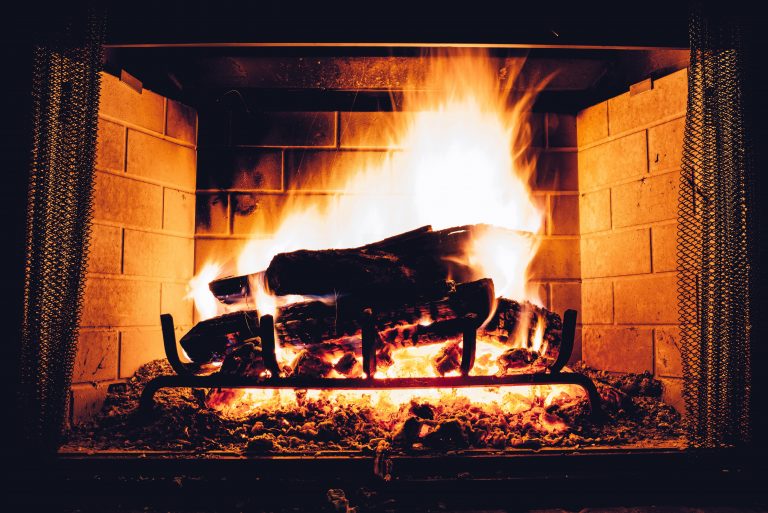Fireplace Safety

There’s nothing quite as cozy as a warm, crackling fire in the fireplace. But if you don’t take some simple safety precautions, that fire could turn deadly. More than 6,000 people end up in emergency rooms for injuries associated with fireplaces and fireplace equipment… and most of the injuries occurred with children under five years old.
Approximately 14,000 house fires each year are started by fireplaces. Most of these fires escalated beyond the fireplace because of an overloaded fire, damage to the fireplace such as missing bricks, obstructed flues, ignition of nearby combustibles, and flying sparks.
Keep your family safe and warm by following these fireplace safety tips:
Inspect the fireplace. Make sure it has adequate protective linings and smoke ducts. Check to see that the chimney is clear and in good repair.
If you are installing a factory-made fireplace, it should not be located near any combustible materials. It should also have adequate flame and heat barriers.
Have chimneys inspected annually, and cleaned as necessary, by a CSIA (Chimney Safety Institute of America) Certified Chimney Sweep. This reduces the risk of fires and carbon monoxide poisonings due to creosote buildup or obstructions in the chimneys. To locate a certified sweep, visit the CSIA Web site at www.csia.org or call
1-800-536-0118. A certified sweep can also perform maintenance on your wood stove or
help remove gas logs from a fireplace.Keep the top of chimneys clear of tree limbs or debris.
Install a chimney cap to keep debris and animals out of the chimney.
Always open the damper before lighting the fire and keep it open until the ashes are cool. This will avert the build-up of poisonous gases, such as carbon monoxide.
Fuel the fire safely. For burning firewood in wood stoves or fireplaces, choose well-seasoned wood that has been dried for a minimum of six months to a year and stored properly.
Build it right. Place firewood or fire logs at the rear of the fireplace on a supporting grate. To start the fire, use a firelighter.
Never use gasoline, charcoal lighter or other fuel to light or relight a fire because the vapors can explode. Never keep flammable fuels near a fire. Vapors can travel the length of a room and explode.
Do not use coal or charcoal in a fireplace because because of the danger of carbon monoxide build-up. Do not burn trash or gift wrap in the fireplace because polystyrene foam and other coated materials can generate deadly fumes. Flying paper embers could also ignite the roof.
Do not treat artificial logs like real logs. Artificial logs are usually made of sawdust and wax and have special burning properties. Be sure to read the instructions on the logs and follow them carefully. Use just one log at a time and do not add another log until the fire is completely out. Never add an artificial log to a natural wood fire that is already burning. Wait at least two hours before adding an artificial log to a natural log fire because it could cause a flare-up.
Do not poke artificial logs because the flaming wax could stick to the poker and drop onto the floor or carpet. Poking a log could also cause a flare-up.
Home rolled newspaper logs should never be soaked in flammable fuels of any kind because of the severe danger of explosion. Soaking the newspaper in water either before rolling or during rolling removes the clay content and will provide a better burning log. Then, stack the logs on end and let them dry for two weeks in the basement. When lighting the newspaper logs, use kindling just as you would for a regular fire.
Do not overload the fireplace. Large fires can lead to overheating of wall or roof materials, particularly if the fireplace is constructed of metal.
Always use a screen around the fireplace to keep sparks from flying out and to protect children and adults from accidental clothing ignition.
Warn children about the danger of fire. Do not let them play with fire.
Keep flammable materials such as carpets, pillows, furniture or papers away from the fireplace area.
At holiday time, make sure the Christmas tree is not close enough to be ignited by a spark. Be especially careful of accidentally igniting holiday wrapping papers.
Always make sure that the fire is completely extinguished before going to bed for the night or when leaving the house.
